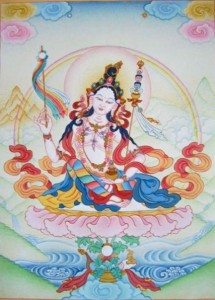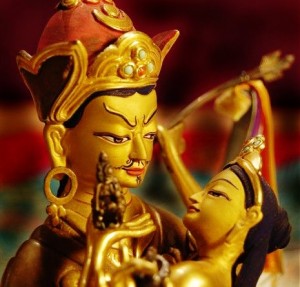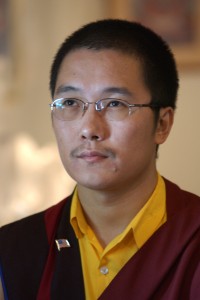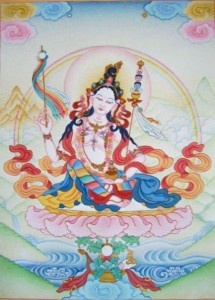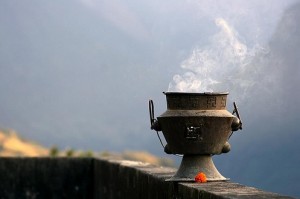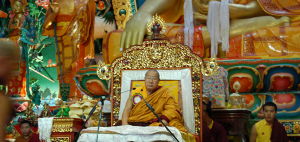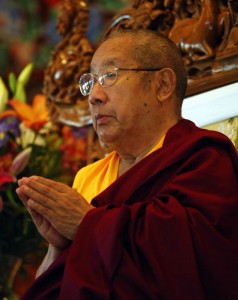The following is an excerpt from a teaching by Jetsunma Ahkon Lhamo called “Neurotic Interaction to Guru Yoga”
You need to determine for yourself, “Did I choose this to be what it is? And have I gone through the entire process? And do I know what I’m thinking? Or not.” It is not about being true to the guru. It’s not like you’re married and can’t go out with anybody else. It’s not like that. Being true to yourself: you have this opportunity. Let this be the one arena in which you do not do the little neurotic dance. Let this be the one area in which you accept the responsibility of watching the relationship with one’s teacher as though one were watching a display of one’s own mind on an external projection thing, like a TV. Able to learn about oneself, able to determine.
And so this experience, then, the relationship with one’s teacher, becomes extremely useful and extremely pure. There is no exerting of one will over the other. That’s not what’s happening here. It is the development of a pure understanding, free of the usual habitual tendency and contrivance that we engage in. We all do this. We all do this. I even find myself doing this. Sometimes I’ll think, “Oh, god, it’s been too long since I’ve called my teacher. I’ve gotta call him.” That’s so ridiculous, so ridiculous to think like that. And then also to think, “Oh, maybe he’ll be mad at me when I call him. Maybe it’s been too long.” It’s so ridiculous. Completely ridiculous. Because instead you should be asking yourself, “In my continuum, in my mindstream, where is my teacher? What is that? Where is the light of my heart? Is it there? Is it free to be exactly what it can be? Or have I superimposed all of my ideas about relationships on it? Is it time now, in a natural way, do I need to hear the voice of my teacher? Do I need to feel that connection again? Do I need to tell him that his efforts with me have not been wasteful, that I am carrying on his wishes, that I’m doing my best to please him by benefiting sentient beings?” Something like that. Where is the light of my life? That’s the true relationship in there. It doesn’t matter what you do on the outside.
As a teacher, the thing I hate worst in the world is the student that does a whole lot of this, and none of this. It’s not in there. It’s not happening. I mean, boys and girls, I hate to tell you, most of the teachers and myself included, were not born under a rock. They know the difference. So where is the heart? That’s what it’s really about, isn’t it? Where is the heart?
In that way, if you practice purely in that way–and I found this to be truth for me–I know that this is true personally on a deep level. If I practice like that, then my teacher teaches me constantly, whether he is here or not. My teacher teaches me through you, constantly. Don’t even go there! Thinking that now you’re going to be a teacher! Don’t even think it! I saw that little “Oh, yeah, I can do that!” No, it’s true, my teacher teaches me through you. I get to see, I learn so much, through you. I watch how your minds play with things. I watch how you respond to things. I watch how you let go, how you get caught up, and I learn about myself, of course. Of course. And I also learn about the power of the Three Precious Jewels. I have watched them transform lives–unbelievable. Unbelievable!
Copyright © Jetsunma Ahkon Norbu Lhamo. All rights reserved
